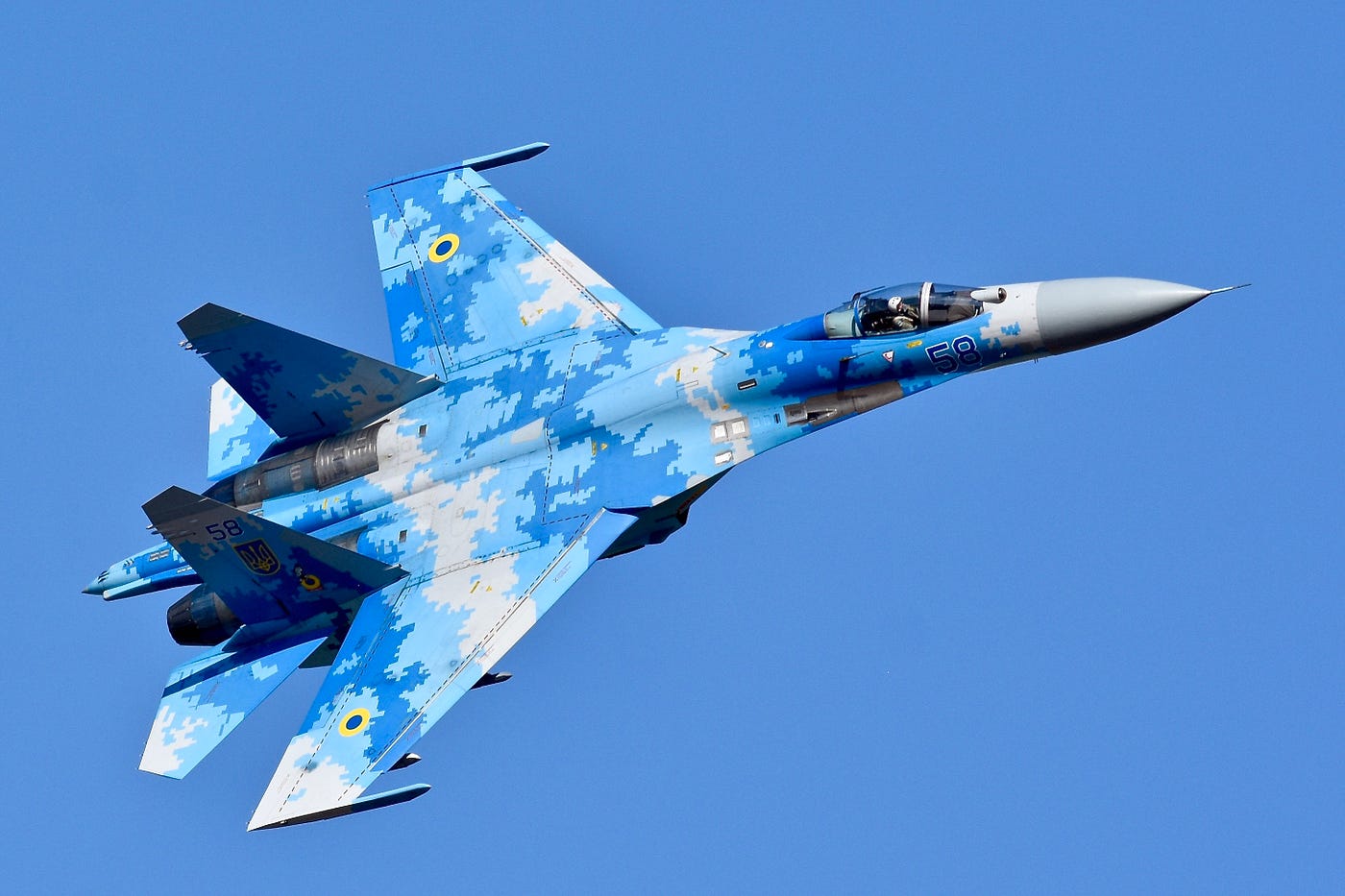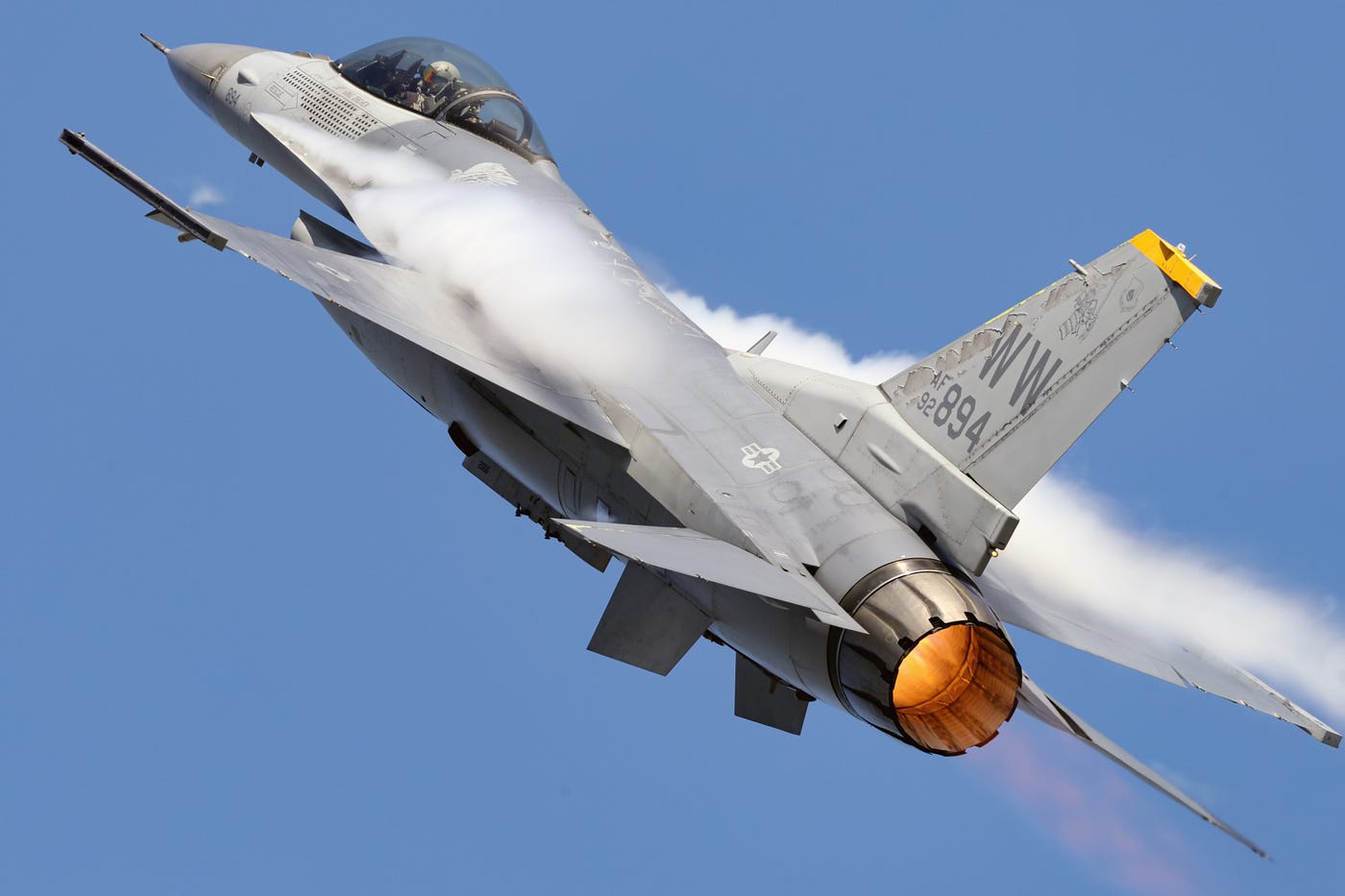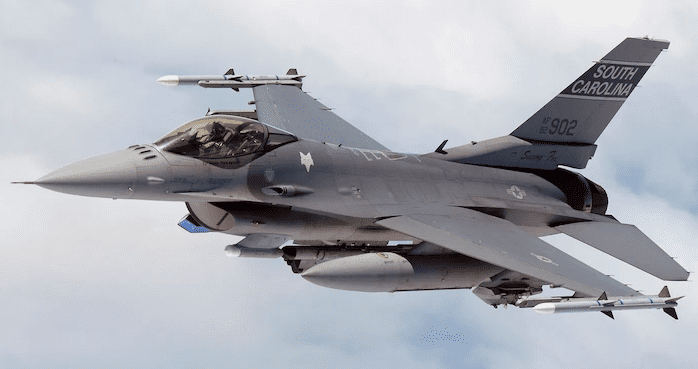A curious feature (or maybe a bug) of the war in Ukraine has been the limited use of airpower on both sides. Former U.S. Air Force general Philip Breedlove has described the air situation as one of “mutual denial”.
Russia’s air defenses are clearly effective at keeping Ukrainian aircraft away from the front, and Moscow, in the interest of not losing any more hardware in its quagmire, has been reluctant to risk its own aircraft much beyond the front line.
This is largely why this war draws comparisons to World War I — where the military fixed-wing aircraft made its debut. The whole point of airpower was to elevate the fight out of the mud and trenches.
Not surprisingly, in the absence of air power, the war has gone back to the trenches.
Despite the frozen airspace over Ukraine, Kyiv began a high-profile lobbying campaign for Western fighter jets in January, almost immediately after Germany and the U.S. said they would supply their own main battle tanks to Ukraine for the first time.
So, if the skies are locked down over much of Ukraine, how might U.S.-designed F-16 Falcons make a difference? Also, why is Ukraine asking specifically for the F-16 and not some other fourth-gen fighter like the F/A-18 Hornet?
To understand how F-16s will change the calculus in Ukraine, we must first look at what Ukraine is flying now and how the F-16 would represent a massive upgrade.
The Ukrainian air force is primarily fielding two Soviet-era jets: the Sukhoi Su-27 Flanker and the Mikoyan MiG-29 Fulcrum.
The Ukrainians entered the war with around 50 MiG-29s and an unconfirmed number of Su-27s. Ukraine inherited 74 then-new Su-27s when the Soviet Union collapsed in 1991. Twenty-three years later, as few as 25 were in service.
Today, their count is a closely guarded secret.
Why?
The Su-27 is Ukraine’s most useful and flexible airframe, plus there are no outside sources for Ukraine to get replacements. Russia wants to destroy them, and Ukraine wants to protect them.
The combo of bort numbers and camo patterns is the quickest way to identify a specific Su-27, but the air force knows this and has begun painting over the bort numbers.
Analysts have confirmed the destruction of no fewer than 52 Ukrainian fighters and attack jets in the first 11 months of Russia’s wider war on Ukraine.

The biggest issue with Ukraine’s Soviet-era fleet of aircraft is that they are just that: Soviet-era. These jets have had very few modern avionics, sensors, and weapons updates compared to their Russian opponents, who are flying the most up-to-date versions of the same aircraft.
In other words, the same aircraft on the Russian side has the benefit of decades of upgrades.
Still, the fact that Ukraine still contests the skies at all, with inferior versions of the same aircraft, is a testament to Ukrainian pilots’ wits and skill in the cockpit. You could say that the quality of the pilot matters more when flying an inferior jet.
But the biggest difference between Russian and Ukrainian jets is the Russians are using new R-37M missiles compared to the R-27 the Ukrainians employ.
The R-37M has 5x the range compared to the R-27. The R-37M also flies at MACH 6 and is, hands down, one of the best air-to-air missiles deployed today.
This crucial Russian capability gives them a standoff ability to sit back and destroy Ukrainian targets and aircraft at a much safer distance.
As good as Russian Su-27s are, the F-16 is far superior.
On the American side, the General Dynamics F-16 Fighting Falcon is a single-engine, highly maneuverable, supersonic, multi-role tactical fighter aircraft.
Previously, the Ukrainians have had to fly dangerously low to the terrain to avoid detection and carry out attack missions. With the F-16, Ukraine will be able to effectively suppress Russia’s air defenses with standoff weapons of their own, like the AGM-88 HARM in large-scale SEAD missions — the Suppression of Enemy Air Defense.
Granted, HARM missiles were attached to Ukraine’s Soviet aircraft in small numbers, but a squadron of F-16s would allow for a dedicated SEAD campaign — thus far, Ukrainian commanders have not been willing to put their few remaining aircraft at risk for such missions.
With Russian air defenses neutralized, at least in critical sectors, Ukraine could then perform close air support missions and interdiction strikes against Russian tank columns, artillery emplacements, massed infantry, and ships.
The F-16 also has eleven hard points for AIM-120 AMRAAM missiles (compared to 7 on the Fulcrum and 10 on the Flanker).
These AMRAAM can match the Russian R-37M for range and if used properly can put Russian fighters on the defensive, potentially opening up a window of opportunity for a ground strike.
Finally, if the Ukrainian jets are currently outmatched because they’re using avionics, sensors, and weapons from the 1970s, while the Russians are using upgraded electronics from the 1990s, the base-model F-16 is using equipment from 2010 and beyond.

To say that the F-16 is as far ahead of the Russian jets as the Russian jets are as far ahead of the Ukrainian jets would be an understatement. The computational power alone in the F-16’s computer systems is decades ahead of the top Russian warplanes.
But why the F-16 and not some other 4th gen jet like the F/A-18, which is just as lethal?
The F/A-18 might look good in a movie like Top Gun Maverick, but it’s not nearly as practical.
Perhaps the biggest reason for sending Ukraine the F-16 over another 4th generation fighter is the fact that many other European countries fly the Falcon.
This means spare parts in abundance. Plus, plentiful mechanic and pilot training.
Belgium, Denmark, Greece, the Netherlands, Poland, Portugal, Romania, and Turkey all fly the F-16. Also, Egypt, Jordan, Morocco, and Israel are all pretty close and could lend support if needed.
In addition, the legacy F/A-18 Hornet is at the very end of its lifecycle and stopped production 23 years ago. The upgraded Super Hornet will be reaching the end of production in 2025.
On the other hand, the F-16 will continue to be built for at least the next ten years and will likely operate well beyond the year 2050.
Cost is another consideration: The F-16 will run you approximately $13 million (more if you get Sirius/XM satellite radio added) compared to $29 million for the Hornet.
Finally, the F/A-18 is a naval-centric aircraft. It’s meant for short takeoffs and landings on carriers and is hardened against a saltwater environment. Which means it’s unnecessarily heavy for Ukraine’s land-based purposes.
Having said that, it’s possible that Australia could give Ukraine some of their F/A-18 Hornets soon.
So, how close is Ukraine to getting the F-16?
After months of debate in Washington, Ukraine looks set to be getting its hands on this lethal Western fighter very soon.
The first batch of F-16s will be arriving in Ukraine in late September, and NATO secretary general Jens Stoltenberg said that the training of Ukrainian personnel has already started.
Ukraine is said to have identified 50 pilots.
Allies claim that it will take 18 months to train Ukrainian pilots to operate the F-16, but that number is exceedingly conservative.
In reality, the Ukrainians have proven extremely adept at learning Western hardware very quickly. I believe training could be accomplished in as few as four months with Ukraine’s talented aviators.
However, it would take some time in the cockpit to fully get the most out of the F-16’s weapons and systems.
You can’t fly the F-16 in the same way as a MiG-29 Fulcrum — if you do, you’re just going to have a very “souped-up” version of a Fulcrum.
F-16 tactics need to be taught along with the jet’s unique capabilities.
But what about escalation?!
The West’s persistent worry that giving Ukraine more advanced weapons would somehow provoke Russia into attacking NATO was always an impotent excuse.
Putin is a lot of things — but he’s not suicidal.
We could (we shouldn’t) but we could park nuclear weapons in Kyiv and Putin wouldn’t do anything about it.
Ukraine has managed to contest the skies with Soviet jets that are decades behind Russia’s. Imagine what they could do with a massive capability boost!
We need to give Ukraine the tools they need to win this war and expel the invader from their lands.
The F-16 Fighting Falcon, if used strategically and in coordination with other assets in Ukraine’s combined arms force, can make a huge difference in this war.
Слава Україні

